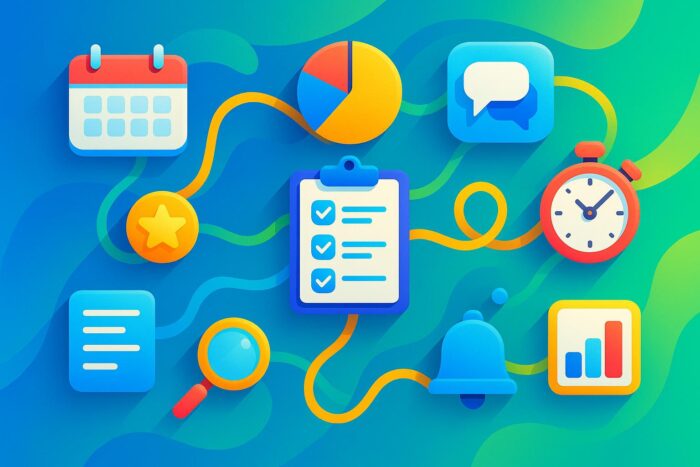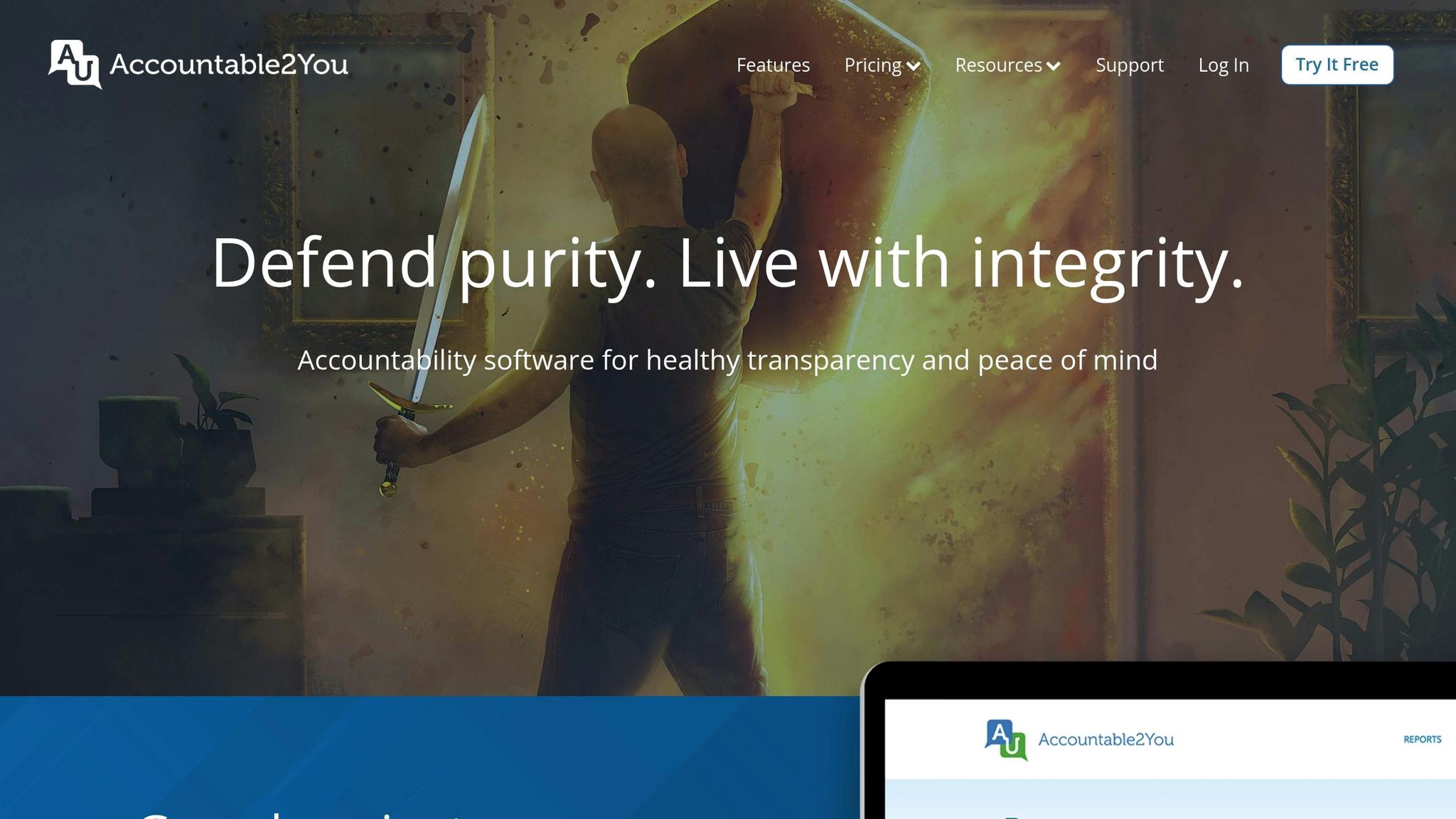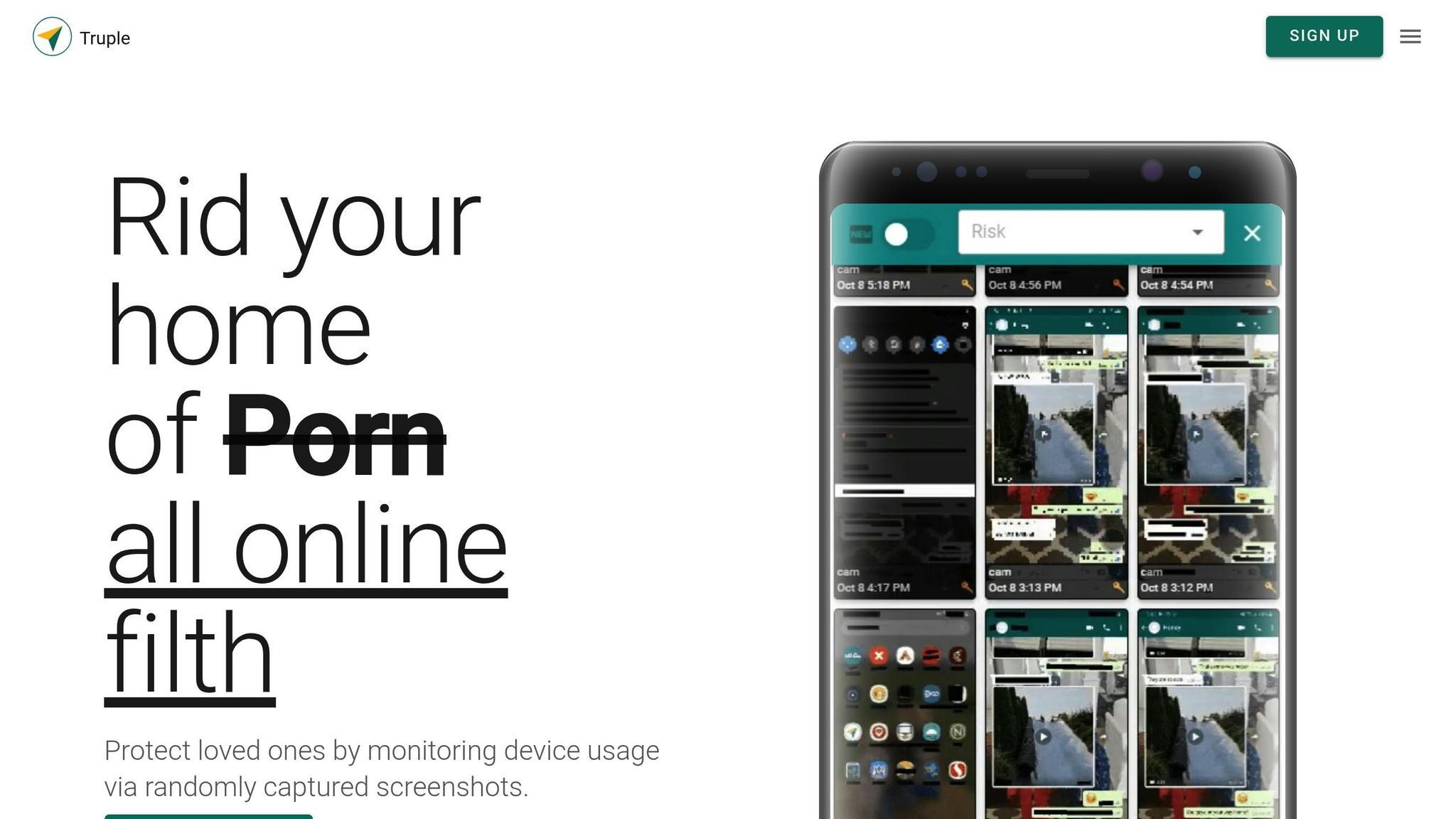
Want to succeed? Start with better sleep. Successful individuals like Jeff Bezos, LeBron James, and Arianna Huffington know that quality sleep fuels productivity, decision-making, and overall well-being. Research shows that sleep-deprived people are twice as likely to make mistakes, and fatigue costs U.S. companies $136.4 billion annually. Here’s how high achievers prioritize rest:
- Jeff Bezos: 8 hours of sleep for energy and better decisions.
- LeBron James: 8–10 hours nightly plus naps for peak performance.
- Arianna Huffington: Bans electronics and follows a calming bedtime routine.
- Bill Gates: Reads 30 minutes nightly to unwind.
- Tim Cook: Wakes up at 4:00 AM after consistent 6.5-hour sleep.
Quick Takeaways:
- Set a consistent sleep schedule.
- Create a relaxing pre-sleep ritual.
- Limit screen time before bed.
Sleep isn’t a luxury – it’s essential for success. Want to perform your best? Start prioritizing rest today.
Sleeping habits of successful people | Daily Routines on Balance the Grind
Sleep Routines of High Achievers
How do successful individuals approach sleep to support their demanding lives? By examining their habits, we can uncover practical strategies to improve rest and boost productivity.
Bill Gates: The Power of a Nightly Routine
Microsoft’s Bill Gates highlights the value of consistency in his evening schedule. Every night, he dedicates 30 minutes to reading before heading to bed, a habit that helps him unwind and prepare for restful sleep.
Jeff Bezos: Rest Fuels Decision-Making
Amazon founder Jeff Bezos makes sleep a top priority, ensuring he gets a full eight hours each night. He schedules his first meeting at 10:00 AM and focuses on tackling his most critical tasks before lunchtime.
"As a senior executive, you get paid to make a small number of high quality decisions." – Jeff Bezos
"I prioritize it. I think better. I have more energy. My mood is better." – Jeff Bezos
LeBron James: Sleep as Recovery
NBA legend LeBron James aims for 8–10 hours of sleep per night, supplemented by 1–2 hour naps during the day. He also ensures his sleep environment is optimal, keeping his room cool and dark, between 68°F and 70°F, to aid recovery and performance.
"That’s the best way for your body to physically and emotionally be able to recover and get back to 100 percent as possible." – LeBron James
Interestingly, a 2011 study on Stanford basketball players found that 10 hours of sleep led to faster sprints and a 9% improvement in shooting accuracy.
Elon Musk: Juggling Sleep and Ambition
Elon Musk, the CEO of Tesla and SpaceX, balances his ambitious workload with a shorter sleep schedule. While his rest duration is less than others, Musk acknowledges that sufficient sleep is crucial for making sound decisions in his high-pressure career.
Arianna Huffington: Championing Better Sleep Habits
Arianna Huffington, co-founder of The Huffington Post, transformed her approach to sleep after experiencing the toll of sleep deprivation. She now enforces strict boundaries in her bedroom, banning electronics like iPads, laptops, and Kindles to avoid blue light exposure and improve her sleep quality.
These examples showcase how different strategies – whether it’s consistency, prioritizing rest, or creating an ideal sleep environment – can help anyone achieve better performance through better sleep.
Common Sleep Practices Among Successful People
High achievers often prioritize sleep as a key component of their success. Here are three habits they commonly follow to improve their sleep quality and overall performance.
Maintaining Consistent Sleep and Wake Times
Sticking to a regular sleep schedule is a cornerstone of many successful routines. For example, Apple CEO Tim Cook starts his day at 4:00 AM after going to bed at 9:30 PM, while Oprah Winfrey maintains a steady schedule from 10:00 PM to 6:00 AM.
Science backs this habit, too. Dr. Jason C. Ong, a sleep scientist at Headspace, emphasizes that waking up at the same time daily is critical for quality sleep. Research shows that a consistent sleep schedule can reduce mortality risk by 30% and cardiometabolic mortality risk by 38%.
"By waking up at a consistent time every day, it helps set our body’s clock, known as the circadian rhythm, which also helps us feel sleepy at the same time every day and have a sufficient window of time for sleep." – Julia Kogan, health psychologist at the Department of Veterans Affairs
To maintain this rhythm, aim to wake up within a 15-minute window each day. If adjustments are needed, do so gradually by 15–30 minutes to keep your internal clock in sync. A consistent schedule also paves the way for a calming bedtime routine.
Creating a Relaxing Pre-Sleep Ritual
For many high achievers, the hours before bed are treated as sacred downtime. Arianna Huffington, for instance, improved her sleep by banning devices from her bedroom and reading non-work-related books before bed.
Barack Obama uses this time to connect with his wife, Michelle, and mentally prepare for the next day. Similarly, Buffer CEO Joel Gascoigne takes a 20-minute evening walk to unwind and reflect on his day.
These rituals signal your body that it’s time to relax. Sleep expert Mollie Eastman explains that consistent pre-sleep habits foster a sense of safety and readiness for rest. Effective activities might include taking a warm bath 30 minutes before bed, reading fiction or poetry, practicing mindful breathing, or jotting down three things you’re grateful for.
Minimizing Screen Time Before Bed
Another common practice among successful individuals is setting boundaries with technology. Gwyneth Paltrow, for example, bans all electronic devices from her bedroom as part of her "clean sleeping routine", ensuring the space remains dark and conducive to rest.
This aligns with expert advice to limit blue light exposure, which can interfere with your circadian rhythm. Mollie Eastman recommends dimming household lights 60 to 90 minutes before bed to signal that it’s time to wind down. Experts also suggest avoiding screens for at least 30 to 60 minutes before sleep. Some, like Arianna Huffington, even remove devices entirely from their sleep environment.
sbb-itb-2d07170
Sleep Habits Comparison Table
The sleep patterns of successful individuals highlight how they manage rest to support their demanding lifestyles. While their routines differ, each person has crafted a sleep schedule that fits their personal and professional goals. The table below provides a snapshot of their habits and the reported benefits.
Sleep Habits and Their Benefits
Here’s a breakdown of key sleep practices among high achievers:
| Individual | Bedtime | Wake Time | Sleep Duration | Key Sleep Practices | Reported Benefits |
|---|---|---|---|---|---|
| Jeff Bezos | Variable | Variable | 8 hours | Prioritizes eight hours | Feels energized and excited |
| Oprah Winfrey | 10:00 PM | 6:00 AM | 8 hours | Maintains a consistent schedule | – |
| Arianna Huffington | Variable | Variable | 8 hours | Follows a disciplined bedtime routine | Helps prevent exhaustion |
| Bill Gates | 12:00 AM | 7:00 AM | 7 hours | Transitioned from all-nighters to routine | – |
| Tim Cook | 9:30 PM | 4:00 AM | 6.5 hours | – | – |
| Elon Musk | 1:00 AM | 7:00 AM | 6 hours | Aware of sleep’s impact on mental acuity | Supports cognitive performance |
| Barack Obama | 1:00 AM | 7:00 AM | 6 hours | – | – |
| Richard Branson | 12:00 AM | 5:00–6:00 AM | 5–6 hours | – | – |
| LeBron James | Variable | Variable | 12 hours (including naps) | Includes naps for recovery | Enhances athletic performance |
| Dwayne Johnson | Variable | 3:30 AM | 3–5 hours | – | – |
| Donald Trump | 1:00 AM | 4:00 AM | 3 hours | – | – |
This comparison underscores the importance of aligning sleep routines with individual needs to maximize performance and productivity. Below are a few insights from these individuals about their sleep habits.
Jeff Bezos emphasizes the role of sleep in his performance:
"Eight hours of sleep makes a big difference for me, and I try hard to make that a priority. For me, that’s the needed amount to feel energized and excited."
Elon Musk reflects on how sleep impacts his efficiency:
"Sleep is really great. I find if I don’t get enough sleep I’m quite grumpy. I could drop below a certain threshold of sleep, although I would be awake more hours I would get less done because my mental acuity would be affected."
LeBron James takes a recovery-focused approach, clocking in around 12 hours of sleep, including naps. On the other hand, Dwayne Johnson operates on just 3–5 hours of rest, well below the 7–9 hours typically recommended for optimal health.
These examples illustrate that while sleep needs vary, a thoughtful approach to rest is a key factor in achieving success.
How to Improve Your Sleep Habits for Success
The sleep routines of high achievers offer practical lessons for anyone aiming to boost productivity and mental clarity. Research consistently highlights the link between quality sleep and cognitive performance, making it an essential part of success. Here’s how you can refine your sleep habits based on proven strategies.
Set a Consistent Schedule
One of the most effective ways to improve sleep is by sticking to a regular schedule. A 2023 study from the Journal of Sleep Research, led by Dr. Emily Carter of the Sleep Research Institute, tracked 200 adults over six months. It found that consistent sleep patterns had a greater impact on cognitive performance than the total hours of sleep.
To get started, set a fixed bedtime, ideally 30 minutes before you plan to fall asleep. Avoid caffeine for at least 10 hours and alcohol for three hours before bed. Consistency trains your body to recognize when it’s time to wind down, setting the stage for restorative rest.
Once you’ve established a schedule, focus on creating a sleep-friendly environment.
Design a Relaxing Sleep Environment
Your bedroom setup can make or break your sleep quality. To create the ideal sleep environment, pay attention to three key factors: temperature, darkness, and quiet.
- Temperature: Keep your room cool, around 65°F (18°C), which is optimal for most people.
- Darkness: Use heavy curtains, blackout shades, or an eye mask to block out light, as this supports melatonin production.
- Quiet: Minimize noise with earplugs or a white noise machine to reduce disruptions.
The Sleep Foundation emphasizes the importance of strong sleep hygiene, stating:
"Strong sleep hygiene means having both a bedroom environment and daily routines that promote consistent, uninterrupted sleep."
Additionally, invest in quality bedding. A mattress and pillow suited to your sleeping position can make a noticeable difference in how well you rest.
With your environment optimized, the next step is to adopt habits that prepare your mind and body for sleep.
Incorporate Sleep-Friendly Habits
A calming pre-sleep routine can signal to your brain that it’s time to unwind. Many successful individuals swear by reading before bed. Another effective ritual is writing a to-do list for the next day, which helps clear the mind. Workplace expert Michael Kerr notes:
"Clearing the mind for a good night sleep is critical for a lot of successful people."
Set boundaries with technology by stopping work-related activities at least two hours before bed. Business consultant Michael Woodward warns:
"The last thing you need is to be lying in bed thinking about an email you just read from that overzealous boss who spends all their waking hours coming up with random requests driven by little more than a momentary impulse."
Taking a moment to reflect on the positives of your day can also help. Time management expert Laura Vanderkam suggests:
"Taking a few moments to think about what went right over the course of the day can put you in a positive, grateful mood."
Finally, consider a warm bath or shower about 30 minutes before bed. Sleep specialist Mollie Eastman explains that this practice raises your skin temperature and lowers your core body temperature, helping your body prepare for sleep.
Conclusion: Why Quality Sleep Matters for Everyone
The routines of high-achieving individuals highlight one undeniable truth: quality sleep is a cornerstone of peak performance and sustained success. Dr. Marishka Brown from the NIH underscores this idea, saying:
"Sleep is not a throwaway thing – it’s a biological necessity."
The data backs this up. Lack of sleep disrupts productivity and can strain both professional and personal relationships.
But sleep isn’t just about staying productive. It plays a pivotal role in maintaining mental sharpness and physical well-being. Dr. Merrill Mitler, a neuroscientist at the NIH, explains:
"Sleep services all aspects of our body in one way or another: molecular, energy balance, as well as intellectual function, alertness and mood."
Getting enough rest enhances cognitive abilities like decision-making and creativity, while also protecting physical health. It helps lower the risk of conditions like obesity, heart disease, and infections. On the flip side, insufficient sleep clouds judgment and hinders good decision-making. This dual impact makes sleep an essential element of a well-rounded, effective life.
Visionaries like Jeff Bezos and Arianna Huffington prove that prioritizing sleep isn’t a weakness – it’s a strategic advantage. A well-rested mind leads to sharper leadership, more inventive solutions, and greater resilience in the face of challenges.
In short, treating sleep as a priority, rather than an afterthought, is key to thriving in every aspect of life.
FAQs
How can I figure out how much sleep I need to perform at my best?
Getting 7 to 9 hours of sleep each night is generally recommended by most experts, as it helps maintain good health, steady energy levels, and mental focus. That said, the exact amount of sleep you need can vary based on factors like your daily habits, overall health, and how restful your sleep is.
The best way to figure out your ideal sleep duration is to monitor how you feel during the day. If you’re waking up refreshed and staying alert without struggling to focus, you’ve probably hit the sweet spot. Try experimenting with different sleep durations and establish a consistent bedtime routine to fine-tune what works best for you.
What are some simple ways to create a calming bedtime routine?
Creating a relaxing bedtime routine can help your mind and body recognize when it’s time to unwind. One simple step is to step away from screens at least 30 minutes before you plan to sleep. The blue light from phones, tablets, and TVs can disrupt your natural sleep cycle. Instead, consider activities like reading a favorite book, enjoying calming music, or soaking in a warm bath to help you ease into rest mode.
Incorporating stress-relief practices like deep breathing exercises or progressive muscle relaxation can also help release physical tension and quiet your mind. These small, consistent efforts can go a long way in improving your sleep quality and setting you up for a more energized day.
Why does avoiding screen time before bed help you sleep better?
Avoiding screen time before bed can significantly improve sleep quality by reducing exposure to blue light. Blue light, emitted by devices like phones, tablets, and computers, disrupts melatonin production – the hormone that helps regulate your sleep-wake cycle. This disruption can delay falling asleep and reduce overall sleep duration, making it harder to feel rested.
By stepping away from screens at least an hour before bedtime, you give your brain a chance to unwind and signal your body that it’s time to prepare for sleep. This small adjustment can help you fall asleep quicker, enjoy deeper rest, and wake up feeling more refreshed.


















